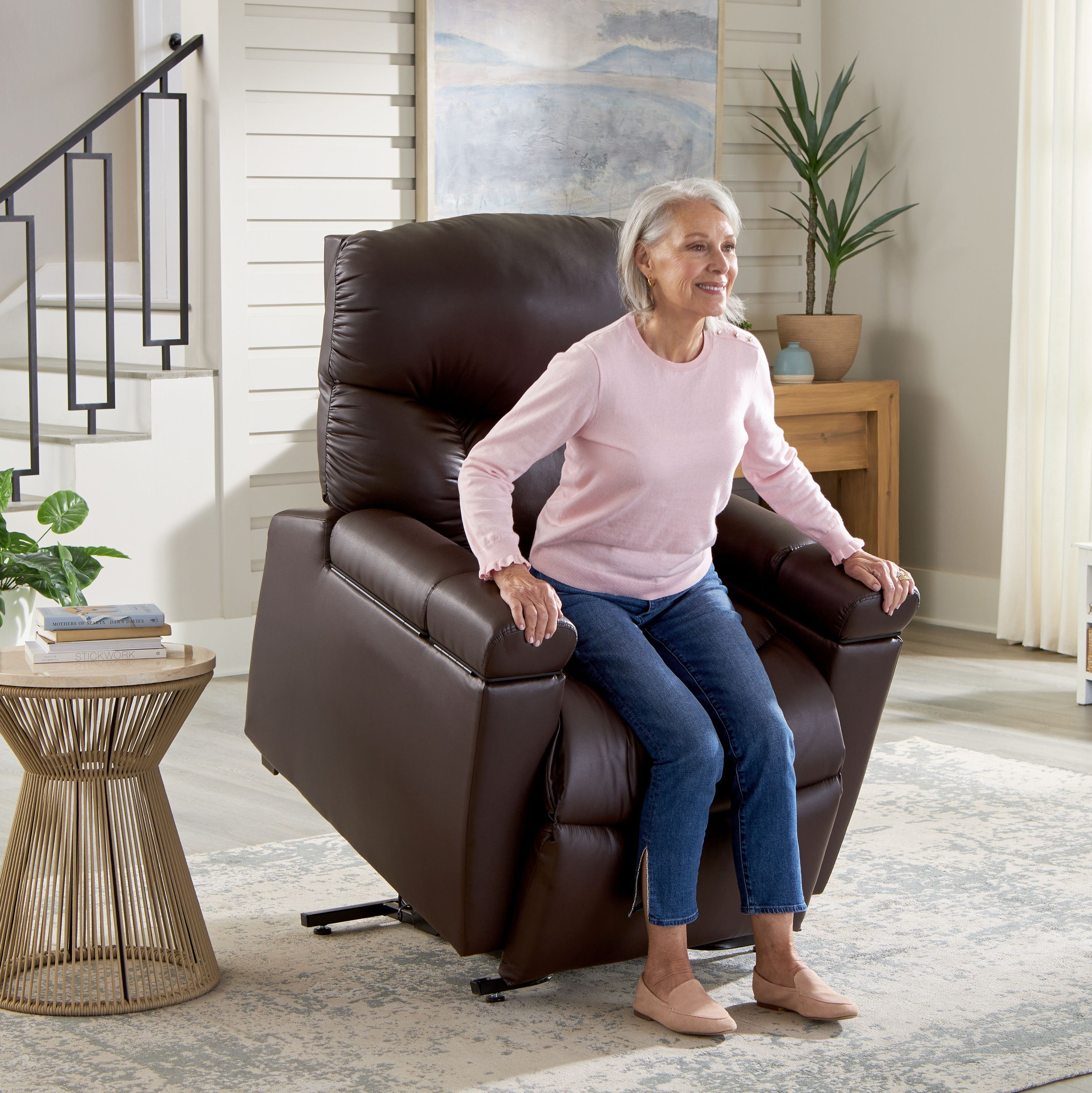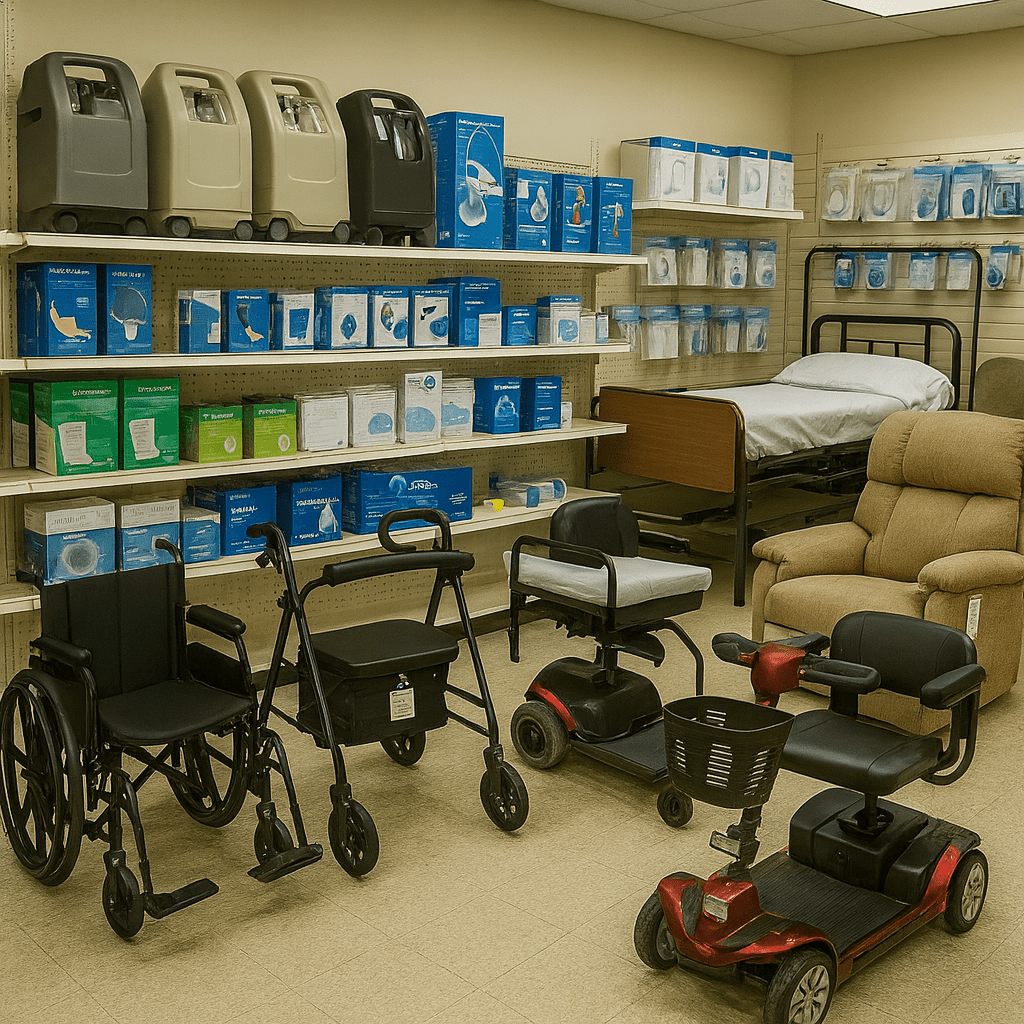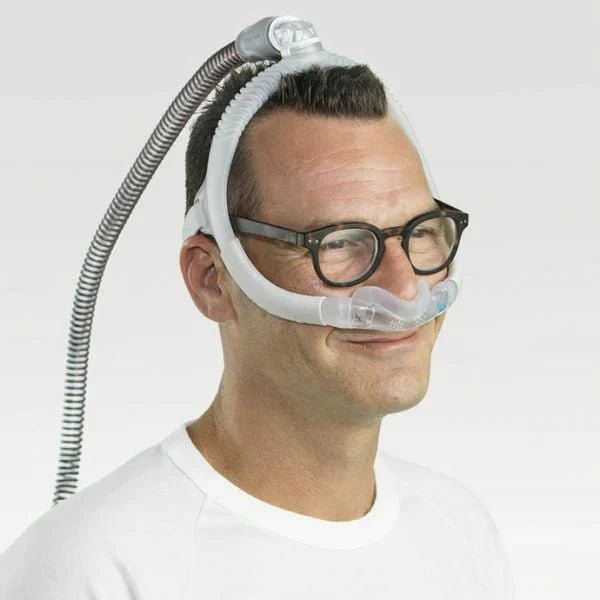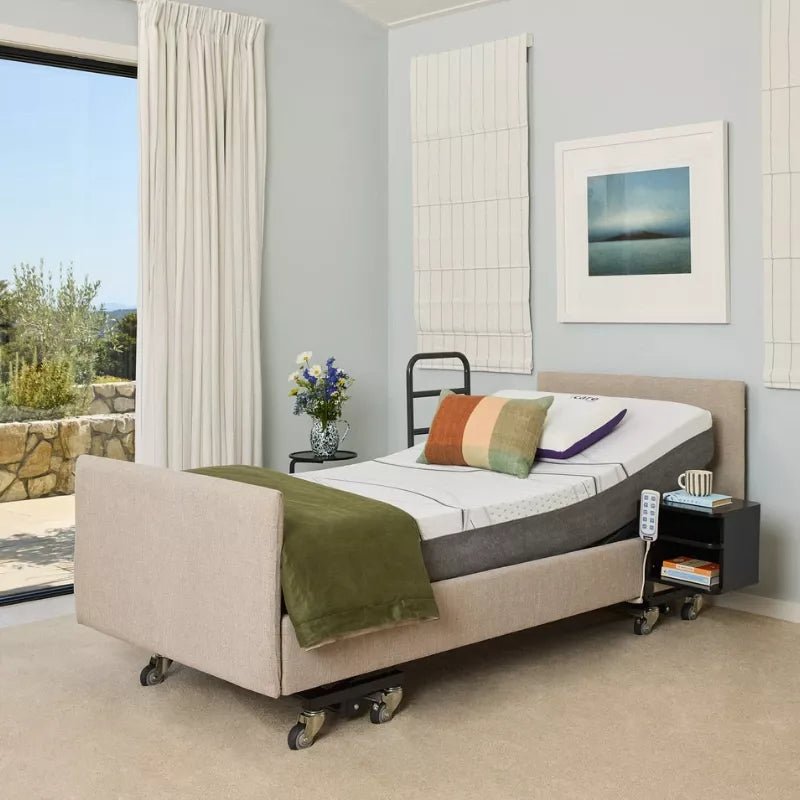Lift Chairs vs. Recliners: What’s the Real Difference?
When most people first hear about a “lift chair recliner,” their first thought is often, “Isn’t that just a fancy recliner with a motor?” It’s an honest question—and if you’ve walked through a furniture store, it’s easy to think the two products are the same thing.
At MedEquip Shop, where we specialize in cash-pay medical equipment and supplies for families caring for loved ones at home, this is one of the first questions we hear from customers. People want to know if a lift chair is truly worth the investment, or if they should just buy a standard recliner at the local furniture store.
The short answer is this: lift chairs and regular recliners may look alike, but they serve two very different purposes. A recliner is about comfort and relaxation. A lift chair is about mobility, safety, and independence—especially for seniors or anyone struggling to get in and out of a seated position.
Let’s break it down in detail.
What Exactly Is a Lift Chair Recliner?
A lift chair recliner looks much like any living room recliner—it has armrests, a padded back, and a footrest. But inside, the difference is huge.
-
Motorized Power Mechanism: Lift chairs use an electric motor to slowly tilt and lift the entire chair forward and upward, bringing the user from a seated to a standing position safely.
-
Medical Classification: In most cases, lift chairs are considered durable medical equipment (DME) because their primary function is medical in nature—they help people who have mobility challenges.
-
Position Options: Depending on the model, lift chairs may offer two-position, three-position, or “infinite position” recline options, allowing for sitting, TV watching, napping, sleeping, or even zero-gravity positioning.
A standard recliner, on the other hand, is usually operated manually by a lever or handle. It does not lift the user up. Its main job is to give you a comfortable spot to sit back and put your feet up.
Who Needs a Lift Chair vs. a Recliner?
Here’s where the biggest difference comes in: who benefits from each product.
-
Standard Recliner: Anyone who wants a cozy chair for reading, watching TV, or napping. A recliner is designed for comfort and convenience, not mobility support.
-
Lift Chair Recliner: Seniors with weak legs, arthritis, balance issues, or post-surgery recovery. Also valuable for people with conditions like Parkinson’s, COPD, congestive heart failure, or chronic pain, where standing up from a seated position can be dangerous or exhausting.
In short: a recliner is for comfort, a lift chair is for independence.
The Safety Factor
One of the most important differences is safety.
Imagine trying to help your parent or spouse out of a recliner. You might lean down, grab their arms, and try to pull them forward. Not only is that unsafe for the person in the chair, but it’s also a fall risk for you as the caregiver.
A lift chair takes the strain off both parties. With the push of a button, the chair gradually raises the person into a standing position. No pulling, no straining, no risk of falling backward.
This is why lift chairs are a medical product, not just a piece of living room furniture.
Features That Set Lift Chairs Apart
Here are the most common features you’ll find in lift chairs that you won’t get in a standard recliner:
-
Powered Lift Mechanism – Helps users stand without assistance.
-
Multiple Recline Positions – Some models recline fully flat, allowing the chair to double as a sleeper.
-
Heat and Massage Options – Many medical-grade chairs include therapeutic heat and massage settings for arthritis, circulation issues, or muscle relaxation.
-
Battery Backup – In case of a power outage, the chair can still return to an upright position.
-
Custom Fit Sizing – Available in petite, medium, large, and bariatric sizes (supporting up to 600+ lbs).
By contrast, a standard recliner offers manual reclining, padded cushions, and maybe a cupholder—but that’s about it.
Cost Differences: Why Lift Chairs Cost More
Let’s be honest: lift chairs are more expensive than standard recliners.
-
Standard Recliner: $300–$900 at a furniture store.
-
Lift Chair Recliner: $899–$2,500+, depending on features, fabric, and weight capacity.
That difference is because lift chairs use durable steel frames, heavy-duty motors, and specialized mechanisms designed for medical use.
As a cash-pay medical supply company, we tell customers upfront: this isn’t just furniture—it’s an investment in mobility and safety.
Insurance vs. Cash Pay: Why It Matters
A common misconception is that Medicare or insurance will cover the full cost of a lift chair. The truth is less exciting:
-
Medicare will only cover the lift mechanism itself (not the chair, fabric, or extras). That reimbursement often works out to about $250–$300.
-
The patient is still responsible for the rest of the cost—typically $700–$1,500 or more.
-
Many insurance-based DME providers don’t even stock lift chairs anymore because the reimbursement is too low.
This is why companies like ours operate on a cash-pay basis. It allows us to offer a wider variety of models, fabrics, and features without being tied down by restrictive insurance rules. Families often find that paying directly saves them the headache of paperwork while still ensuring they get the exact chair they want.
Everyday Life: Real-World Scenarios
Let’s compare how each chair performs in everyday life:
Scenario 1: Watching TV
-
Recliner: Comfortable, but if you fall asleep and need to get up, you’ll have to push yourself out.
-
Lift Chair: Equally comfortable, with the added benefit that when you’re ready to get up, a button helps you to your feet.
Scenario 2: Post-Surgery Recovery
-
Recliner: Difficult, especially if you’ve had knee or hip surgery—you’ll need help standing.
-
Lift Chair: A lifesaver. The powered lift reduces strain on your joints and makes getting up much safer.
Scenario 3: Caregiving for a Parent
-
Recliner: You’ll need to physically assist them. Risk of falls.
-
Lift Chair: You can supervise without straining yourself. The chair does the heavy lifting.
Longevity and Durability
Another key difference: lift chairs are built to last.
Because they’re considered medical equipment, manufacturers design them to withstand daily use for years. Frames are reinforced, motors are tested for thousands of cycles, and fabrics are often stain-resistant and easy to clean.
Standard recliners? They’re built for comfort, not durability. After a few years, many start to sag or squeak.
The Emotional Side: Independence and Dignity
One of the biggest differences that doesn’t show up in the specs is how a lift chair makes people feel.
For someone who has always been independent, having to ask for help just to stand up can feel humiliating. A lift chair restores some of that dignity. With the push of a button, they can get up on their own terms.
We’ve seen countless families in our showroom where the adult child tears up after watching their parent stand from the lift chair without help for the first time in years. That moment is priceless.
How to Decide: Do You Need a Lift Chair or a Recliner?
Ask yourself these questions:
-
Do you (or your loved one) struggle to stand up from a seated position?
-
Is there a risk of falling when trying to get out of a chair?
-
Are you recovering from surgery, or managing a chronic condition like arthritis?
-
Do you want a chair that can double as a napper or sleeper?
If you answered “yes” to any of those, a lift chair is the right choice.
If you simply want a cozy chair for watching TV, a standard recliner will do the job.
-
Lift chair recliner vs recliner
-
Best lift chairs for seniors
-
Power lift recliner for home use
-
Benefits of lift chair recliners
-
Cash pay lift chairs near me
-
Lift chair medical supply store









